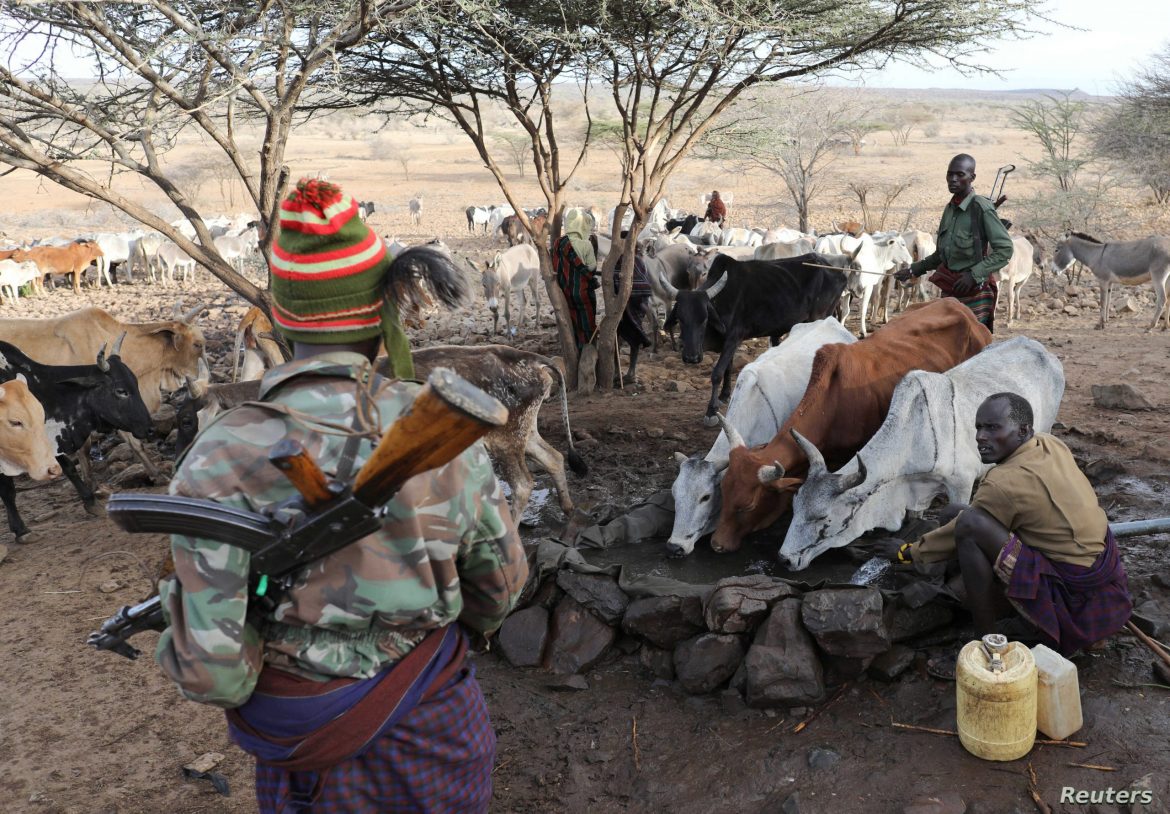
By Simon Kobia
Cattle rustling has been a major problem in many parts of Kenya as some communities turned it into a culture.
The vice is more common in arid and semi-arid areas, despite the government’s efforts to stop it. According to a recent report released by the government’s Crime Research Centre, all the counties in the upper eastern are affected by the vice that does not seem to abate.
According to the report, most Kenyans in the upper eastern engage in agricultural activities as a livelihood.
Crop production and livestock rearing in which communities engage for both commercial and subsistence purposes are dictated by the climatic conditions of the region and cultural practices.
The report clusters the region into two groups, farmland, and pastoral communities.
The report reveals that Samburu and Marsabit counties are leading in cattle rustling with about 80 percent of reported cases.
Samburu County recorded 90.8 percent while Marsabit is credited for 79.6 percent of the livestock thefts. The counties are second and third, respectively, in cattle rustling incidences. Turkana tops the list with 91.5 percent of theft cases.
In the agricultural rich counties of Meru, Embu, and Tharaka Nithi, the cases are lower as compared to their neighbors who are purely pastoralists.
Meru County has been recording high numbers of cattle rustling, in lower parts of the county bordering Isiolo and Samburu. The report indicated that Meru is at 35 percent while Tharaka Nithi that borders Kitui and Embu recorded 11.1 percent.
Embu fairs better as it recorded less than 1 percent of the cases. Most of the areas covered by the county are inhabited by crop farmers who keep very few or no livestock. The lower parts of Mbeere are inhabited by people who depend on livestock.
“Cattle rustling is a threat to national security as it leads to displacements of families and can also lead to other fatalities. To some communities, cattle rustling is viewed as a cultural practice used as a passage to manhood. The other aspect of culture has been the belief by some communities that they were given livestock by God and other communities should therefore not possess cattle,” said the report.
According to another report released by the National police service, several factors explain why cattle rustling continues to thrive in the semi-arid areas. The annual crime report cited scarce resources such as livestock grazing fields, water, and land as the main factors. Other contributing factors include boundary disputes, political interference, and the struggle for supremacy.
The current county governments have initiated plans of reversing this trend through the sensitization of communities.
Educating them on the importance of diversification, instead of over-reliance on livestock is a major component of the campaign to eradicating rustling.
Samburu Governor Moses Kasaine is leading a training program for the residents to embrace keeping dairy cattle in the zero-grazing model that provides a solution to the historical vices of crimes committed by cattle rustlers.
In Meru, the government initiated a plan of converting the lower grazing area into a conservancy to act as a buffer zone against cattle rustlers. It is also meant to promote alternative income-generating activities like tourism.
The Marsabit and Isiolo governments also have a peace and reconciliation program meant to curb the rustling which for years compromised security and plunged many into poverty.




